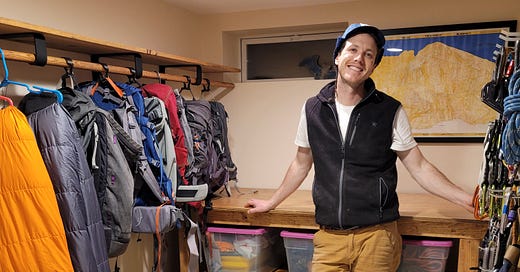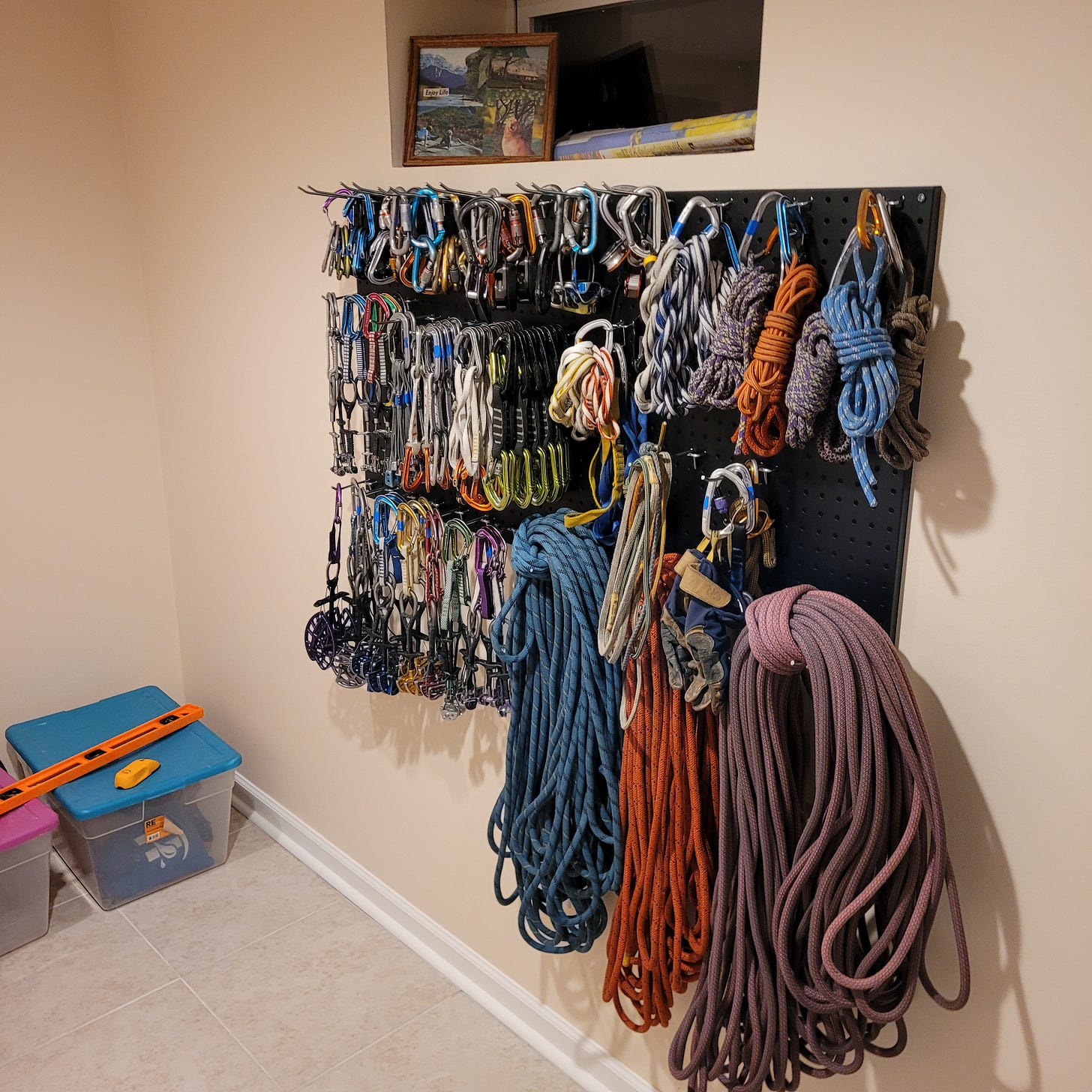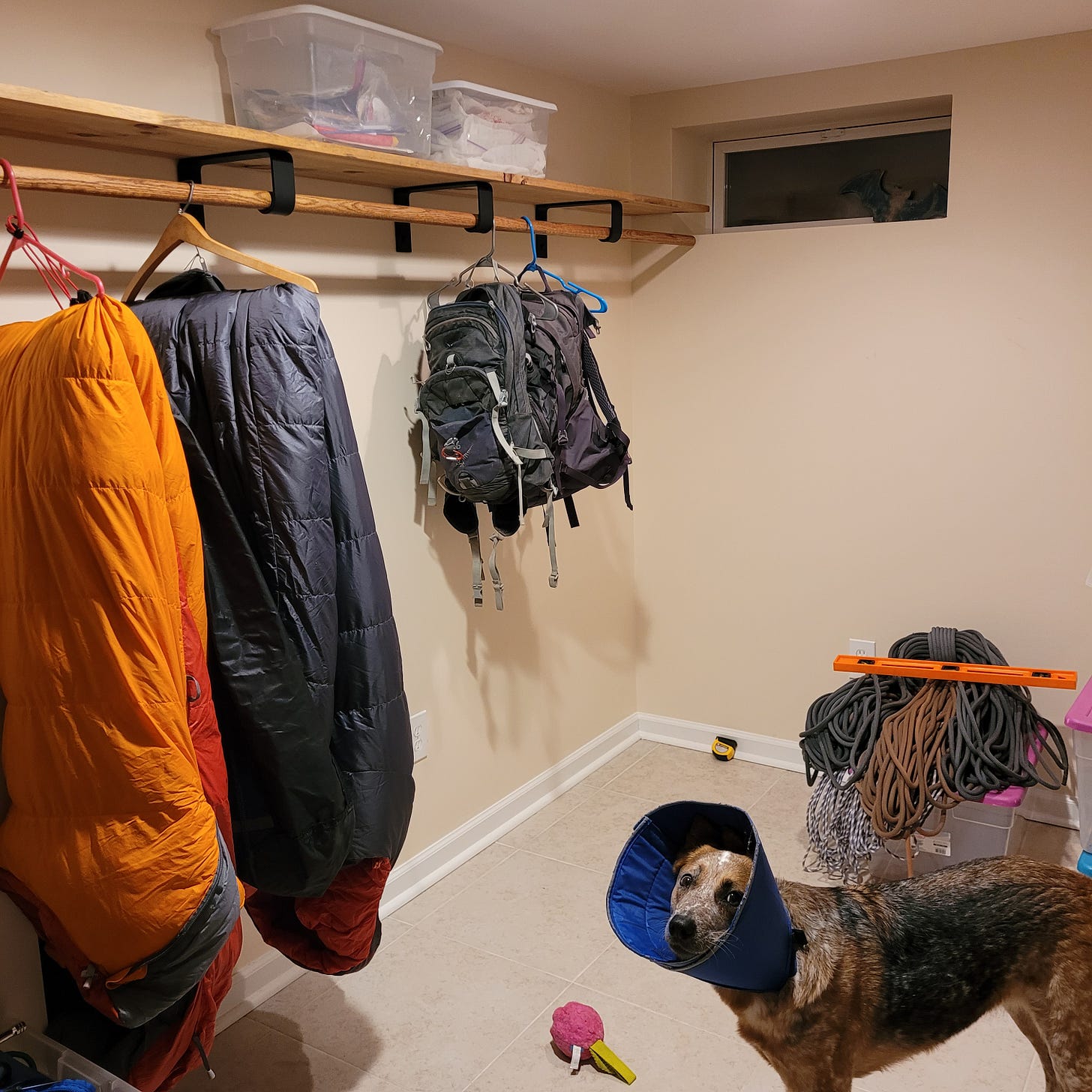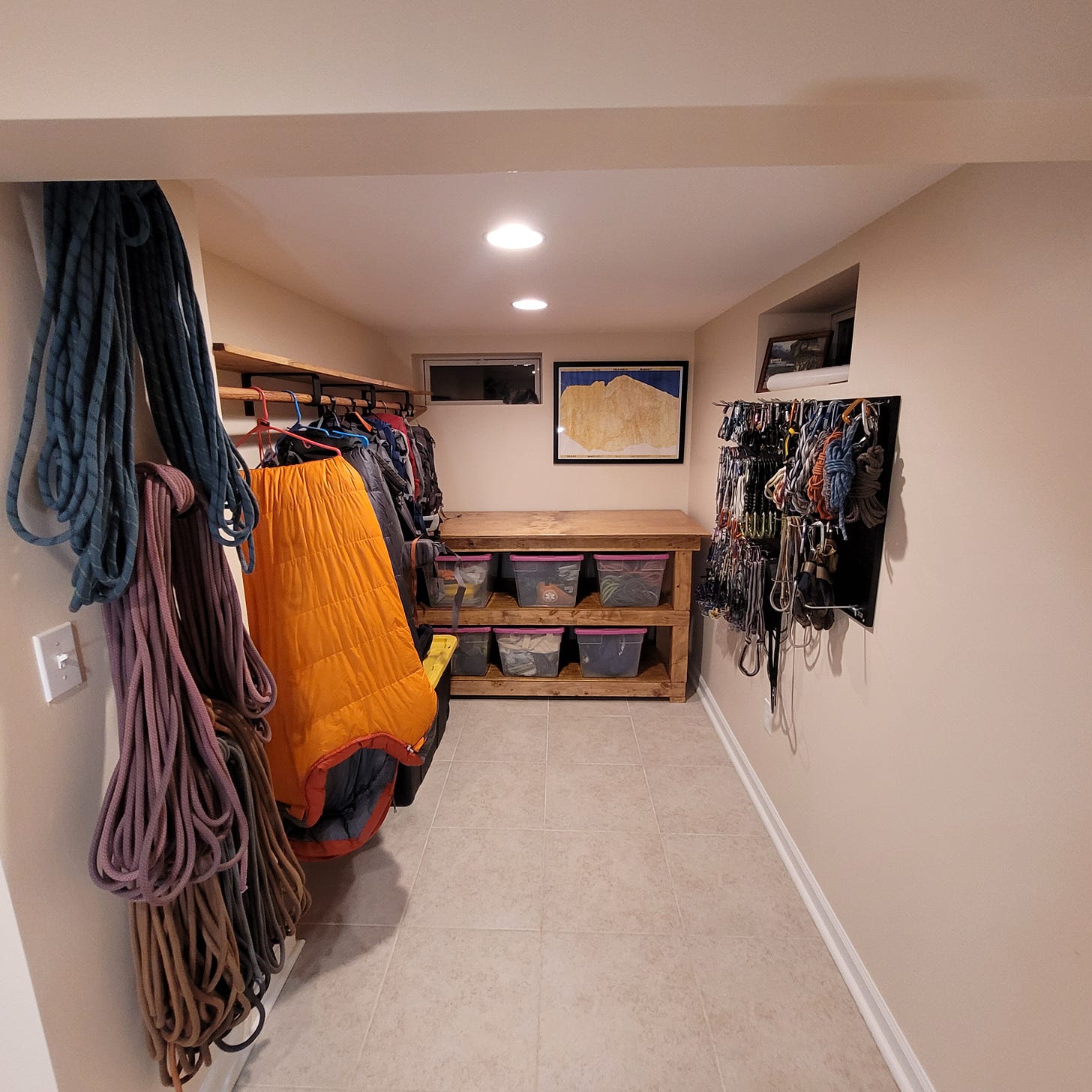If my heaven for rock guides looked like anything in particular, it’d probably be a big, beautiful mountain range with geologically impossible consolidations of all my favorite rock types. The rock quality would be impeccable. Approach escalators would carry my clients to the cliff, and descent zip lines would blast them back to the base, straight to a barstool. At the base of the cliff, there’d be a food court-like arrangement of my favorite coffee shops, eateries, and breweries from around the world. And all my favorite climbing partners, living or dead, would have unlimited availability to climb with me at all times of the day.
Either that or rock guide heaven would look like my basement.
Why my basement?
My partner, Whitney, and I purchased a home a little over a year ago. To our delight, it had a fully finished basement. It had a laundry room, extra storage closets, and ample room for what we transformed into a guest suite.
In the far corner of the guest suite is a strange little cubby space, about 7 x 10 feet. It’s kind of like the leftover space after the remodelers finished the laundry room and principal area that’s now a bedroom.
When we first saw this strange cutout cubby, we quickly agreed to eventually transform it into a gear closet.
After buying the house, we postponed the gear closet project. And rightfully so. We had some other priorities for the home, namely outside stuff. Whitney and I spent what felt like eternal damnation, toiling in the backyard garden beds, removing an invasive ground cover that swallowed everything in its path. After that, we decided to wait until winter to start an indoor project like a gear closet.
That time finally came and went! The gear closet is complete, so it feels like I’ve died and gone to rock guide heaven. Having a space like this will greatly improve my work flows. And it just feels utterly satisfying.
Building my heaven
It took a lot of time to conceptualize how we were going to utilize the space. After I was finished dreaming up some layout options and proposing a budget, Whitney joined in to interject practical components like blueprints with measurements.
Eventually, we decided on a pegboard area, a wall for hanging backpacks and sleeping bags, and a sturdy workbench.
Phase #1: the pegboard
Any maker, inventor, craftsperson, or human being with too many tools drool over the pegboard. It’s the same for rock climbing guides.
That’s because pegboards are such an efficient utilization of vertical storage space. They’re 100% customizable to your preferences and very affordable. Plus, the aesthetic appeal they provide by displaying all your stuff massages is a strange pleasure zone in my brain somewhere.
As a climbing guide, I always knew that one day, all my carabiners, quickdraws, and assorted clicky clackies would be elegantly displayed on a pegboard.
Phase #2: hanging storage
If you were to ask me which category of outdoor gear I have the most of, backpacks would be an easy answer. Backpacks and other sorts of bags, satchels, and man-purses. I guess you could call me a bag man
Do anything outside for a long time, and you’ll realize how important backpacks are for carrying food, water, and other stuff. Do anything outside for a long time with the “incorrect” backpack, and you’ll realize how much more enjoyable outside can be with the “correct” backpack.
Backpacks (and bags) are tools, and it’s nice to have the right tool for the job, which is why I have so many.
Up until my rock guide heaven, I stored my backpacks on the floor. I layered them in various closet spaces like a bunch of dirty clothes. When I needed one, I unburied it, rattled off the dust, and filled it with gear for whatever I was doing.
Now, my backpacks are hung up like royalty. They’re organized, easy to access, and do not collect dust on the floor. It’s magnificent.
My sleeping bags are happy, too. Hanging sleeping bags for storage is a good idea because their interior material is uncompressed, and they can have good airflow, just dangling there. Sort of like the feeling someone with a penis and testicles might feel when they wear a sarong.
Phase #3: a workbench
Regarding garages, workshops, sheds, or gear closets, what’s more quintessential than a workbench? I’d argue nothing. (Well, maybe a pegboard).
A workbench is a catch-all. It’s a horizontal blank slate. A tabla rasa, if you will. A space to fix stuff, eat stuff, organize things, clean stuff, break stuff, and put stuff. In our case, the workbench also provides storage. It has two rows of shelves that house six plastic bins full of camping gear.
The versatility of this workbench has untapped potential. I can’t wait until it gets some patina and scratches and scuffs. And covered in character from doin’ stuff.
Now it’s time to enjoy heaven
I am looking forward to enjoying the functionality of this luxurious space. For now, though, it’s still too cold to use any of the gear. That’s why sometimes I just go down there and look at it. And clip/unclip a carabiner or two.
Eventually, this new gear closet will be the nucleus of my work as a guide. To have a space like this just feels pro. It’ll allow me to take better care of my equipment and better serve my clientele.
The new closet will also become the staging area for adventures with Whitney. A space where we crack beers and pull gear as we relish an upcoming trip. And where we dump all our dirty and dusty doo dads after having been there and done that.
This newsletter is entirely reader-supported. If you enjoy my writing, you can make a one-time donation at Buy Me a Coffee. Your support means a lot. Thank you!







This gives me some more ideas for the gear and weights room we have been working on.
I’m just taking over the garage. But there’s no organization. And just now I was sitting on the concrete floor writing. Progress not perfection!